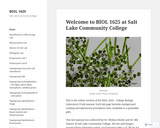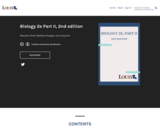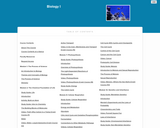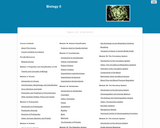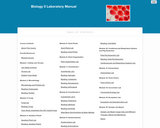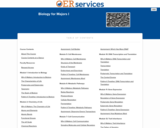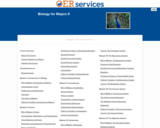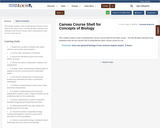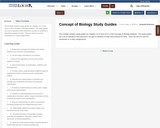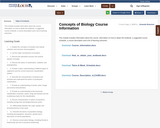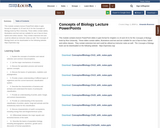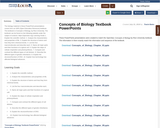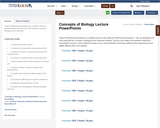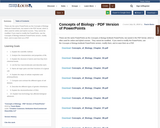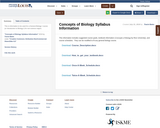Module 1: Introduction to Biology
Characteristics of Life
Prokaryotes and Eukaryotes
Taxonomy
The Study of Biology
Module 2: Viruses
Viral Evolution, Morphology, and Classification
Virus Infections and Hosts
Prevention and Treatment of Viral Infections
Prions and Viroids
Module 3: History of Life
Evolution
Speciation
The Evolution of Populations
Phylogenies and the History of Life
Module 4: Prokaryotes
Prokaryotic Diversity
The Structure of Prokaryotes
Prokaryotic Metabolism
Bacterial Diseases in Humans
Beneficial Prokaryotes
Module 5: Protists
Characteristics of Protists
Groups of Protists
Ecology of Protists
Module 6: Fungi
Characteristics of Fungi
Classifications of Fungi
Ecology of Fungi
Fungal Parasites and Pathogens
Module 7: Plant Diversity
Seedless Plants
Seed Plants
Module 8: Plant Structure and Function
Plant Structures
Transport of Water and Solutes in Plants
Plant Sensory Systems and Responses
Plant Growth
Plant Nutrition
Module 9: Plant Reproduction
Reproductive Development and Structure
Asexual Reproduction in Plants
Sexual Reproduction in Plants
Module 10: Animal Diversity
Evolutionary History of the Animal Kingdom
Animal Phylogeny
Animal Form and Function
Animal Primary Tissues
Animal Reproduction
Homeostasis
Module 11: Invertebrates
Phylum Porifera
Phylum Cnidaria
Superphylum Lophotrochozoa
Superphylum Ecdysozoa
Superphylum Deuterostomia
Module 12: Vertebrates
Chordates
Fishes
Amphibians
Amniotes
Reptiles
Birds
Mammals
Module 13: Overview of Body Systems
Integration of Systems
Control Systems
Cell Maintenance Systems
Support Systems
Module 14: The Nervous System
Components of the Nervous System
Neuron Communication
The Central Nervous System
The Peripheral Nervous System
Nervous System Disorders
Module 15: The Endocrine System
Types of Hormones
How Hormones Work
Regulation of Body Processes
Endocrine Glands
Module 16: The Reproductive System
Reproduction Methods
Human Reproductive Anatomy
Hormonal Control of Human Reproduction
Fertilization
Early Embryonic Development
Human Pregnancy and Birth
Module 17: Sensory Systems
The Senses
Somatosensation
Taste and Smell
Hearing and Vestibular Sensation
Vision
Module 18: The Circulatory System
The Circulatory System
Structure and Function of Blood
The Mammalian Heart
Blood Flow and Blood Pressure Regulation
Module 19: The Respiratory System
Systems of Gas Exchange
Gas Exchange across Respiratory Surfaces
Breathing
Transport of Gases in Human Bodily Fluids
Module 20: The Immune System
The Innate Immune Response
The Adaptive Immune Response
Antibodies
Module 21: The Digestive System
Digestive Systems
Nutrition and Energy Production
Digestive System Processes and Regulation
Module 22: The Excretory System
Osmoregulation and Osmotic Balance
Kidneys and Osmoregulatory Organs
Excretion Systems
Module 23: The Musculoskeletal System
Skeletal Systems
Bones
Joints and Skeletal Movement
Muscle Contraction and Locomotion
Module 24: The Integumentary System
Structure and Function of Skin
Accessory Structures of the Skin
Functions of the Integumentary System
Diseases, Disorders, and Injuries of the Integumentary System
Module 25: Ecology of Living Things
The Scope of Ecology
Biotic and Abiotic Factors
Biomes
Population Ecology
Community Ecology
Module 26: Ecology and the Environment
Energy in the Environment
Biogeochemical Cycles
Climate Change
Conservation Biology and Biodiversity
